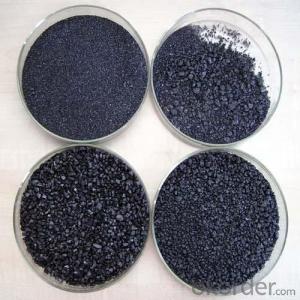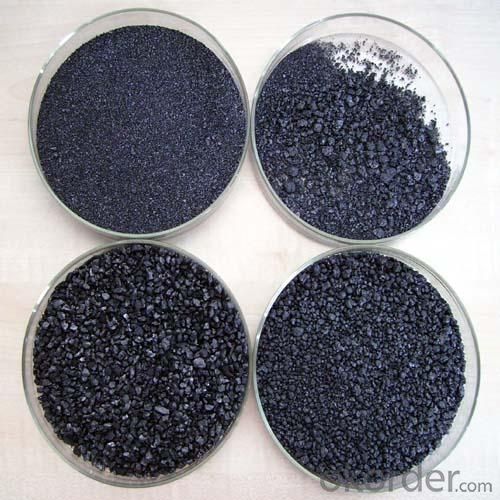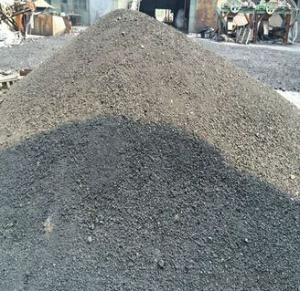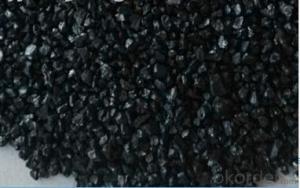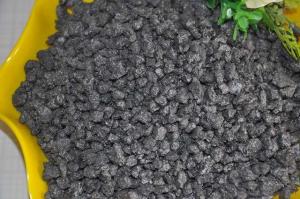Carbon Additive Coal High Heat Productivity
- Loading Port:
- Tianjin
- Payment Terms:
- TT or LC
- Min Order Qty:
- 20 m.t.
- Supply Capability:
- 10000 m.t./month
OKorder Service Pledge
OKorder Financial Service
You Might Also Like
Quick Details
Place of Origin: Ningxia, China (Mainland)
Application: steel making
Shape: granule
Dimensions: FC90-95%
Product Type: Carbon Additive
C Content (%): 90-95% MIN
Working Temperature: -
S Content (%): 0.5%MAX
N Content (%): -
H Content (%): 0.6%MAX
Ash Content (%): 8.5%MAX
Volatile: 2%MAX
ADVANTAGE: low ash & sulfur
COLOR: Black
RAW MATERIAL: TaiXi anthracite
Packaging & Delivery
| Packaging Details: | In 1MT plastic woven bag. |
|---|---|
| Delivery Detail: | 30-40DAYS |
Specifications Carbon Additive Coal High Heat Productivity Carbon Additve low Ash,S,P Structure Carbon Additive Coal High Heat Productivity Shape: granule Dimensions: FC90-95% Product Type: Carbon Additive C Content (%): 90-95% MIN Working Temperature: - S Content (%): 0.5%MAX N Content (%): - H Content (%): 0.6%MAX Ash Content (%): 8.5%MAX Volatile: 2%MAX ADVANTAGE: low ash & sulfur COLOR: Black RAW MATERIAL: TaiXi anthracite Feature Carbon Additive Coal High Heat Productivity Specifications (%): Grade F.C Ash V.M Moisture S Size CR-95 ≥95 <4 <1 <1 <0.3 0-30mm CR-94 ≥94 <4 <1 <1 <0.3 CR-93 ≥93 <6 <1 <1 <0.4 CR-92 ≥92 <7 <1 <1 <0.4 CR-91 ≥91 <8 <1 <1 <0.4 CR-90 ≥90 <8.5 <1.5 <2 <0.4 Image Carbon Additive Coal High Heat Productivity FAQ: Carbon Additive Coal High Heat Productivity Why we adopt carbon additive? Carbon Additives used as additive in steel making process. It made from well-selected Tai Xi anthracite which is low in content of ash, sulphur, phosphorus, high heat productivity, high chemically activation. Mainly industry property of it is: instead of traditional pertroleum coal of Carbon Additives, reduce the cost of steelmaking. Advantage: Carbon Additive Coal High Heat Productivity 1.High quality and competitive price. 2.Timely delivery. 3.If any item you like. Please contact us. Your sincere inquiries are typically answered within 24 hours.
FC>95% ASH<4% S<0.3%
It is made from TaiXi anthracite.
instead of pertrol coke reduce the cost
As buyer's request.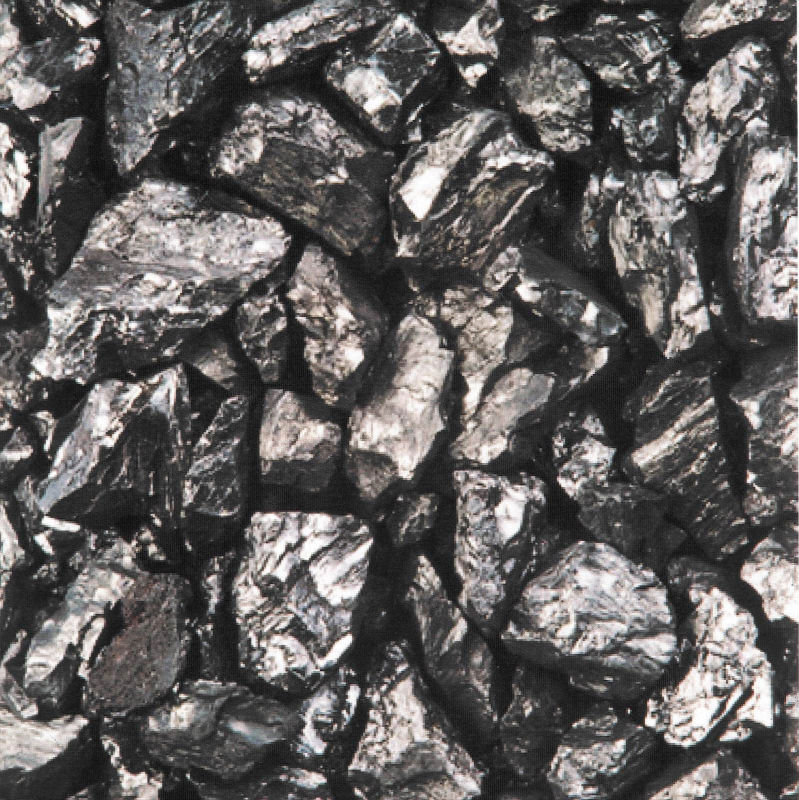

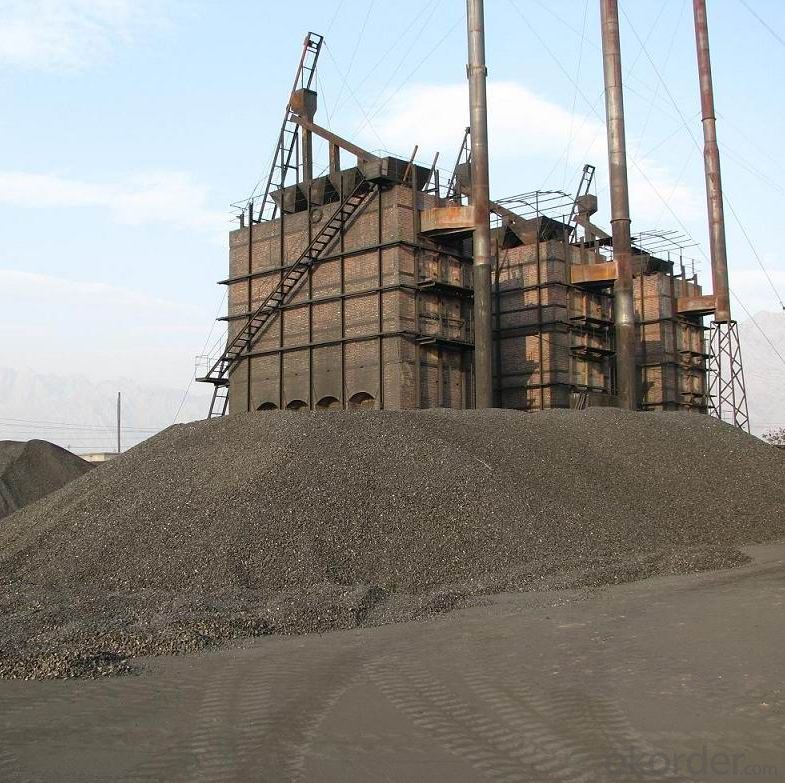
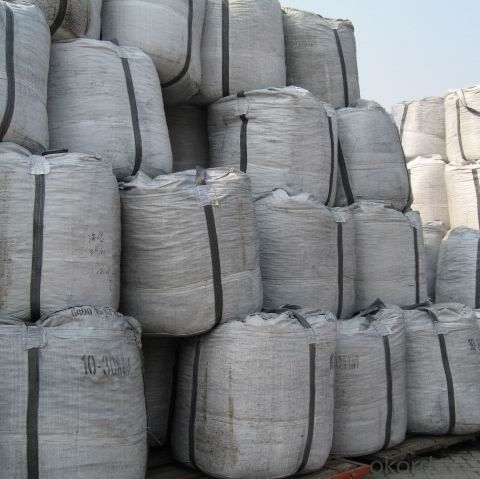
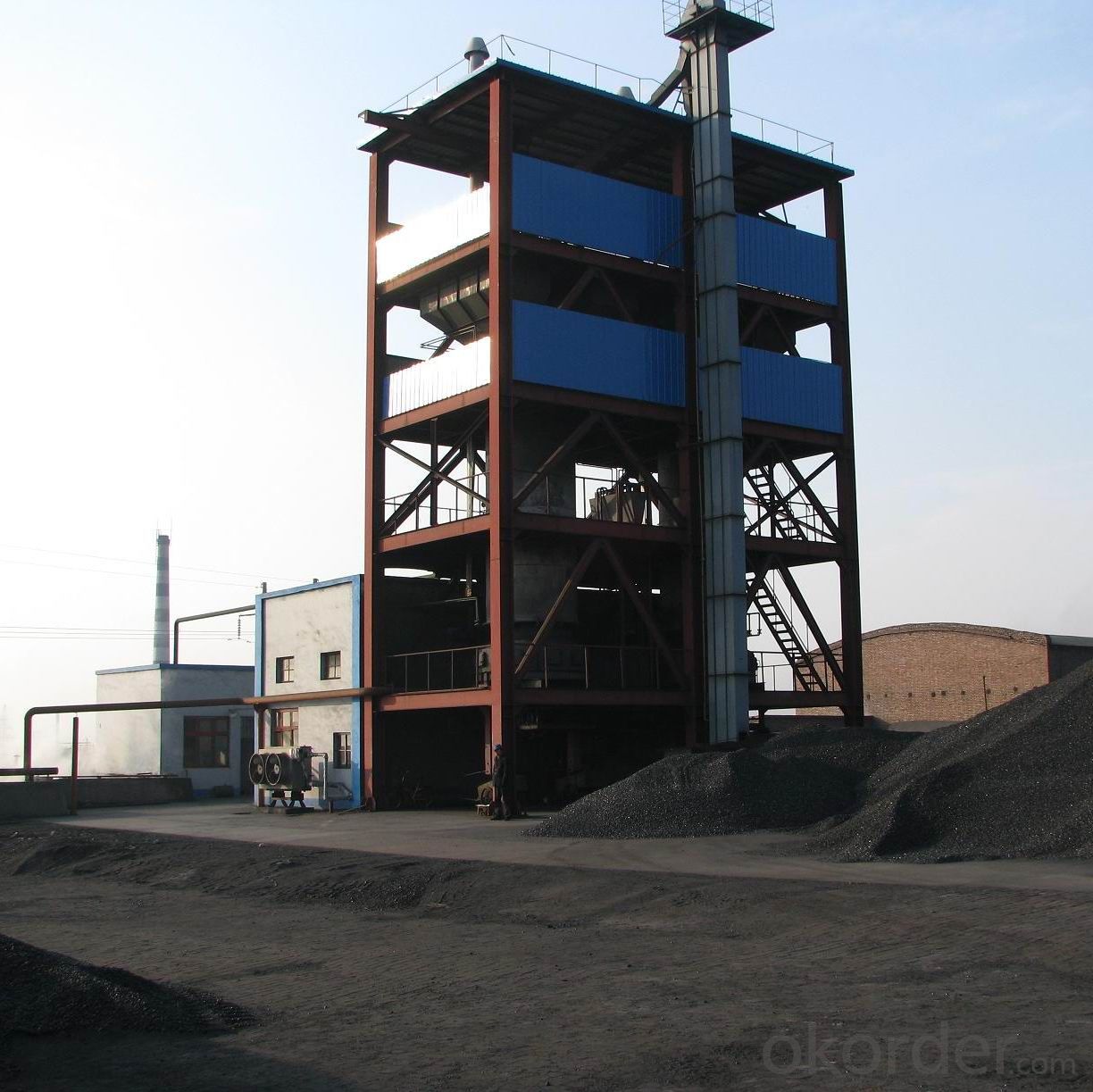
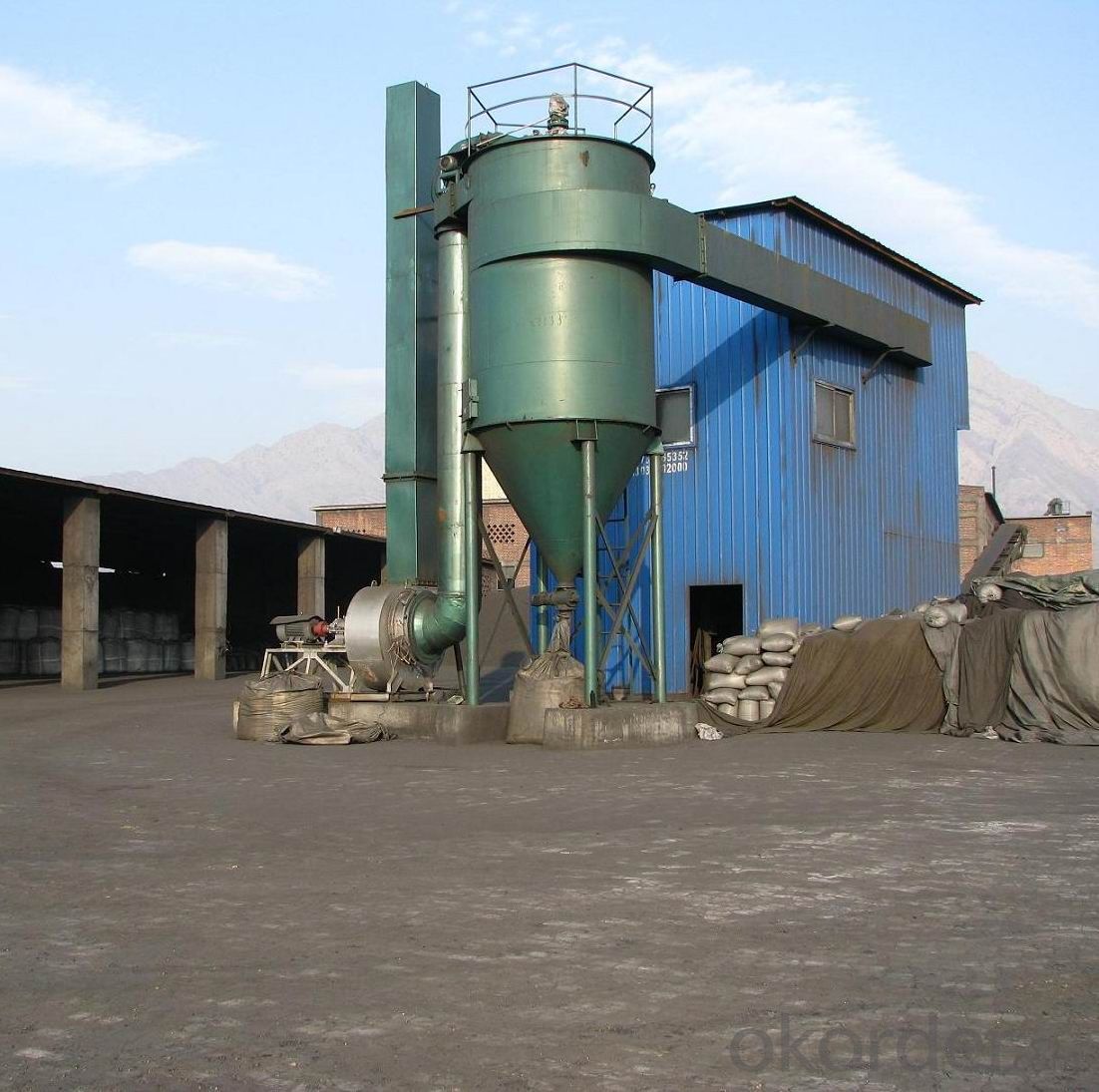

- Q: How does a kebab cook at home?
- It's easy to burn carbon at home1, put on the gas stove, ignited after use,2, pour some cooking oil in waste paper or Suibu, carbon on top, can be ignited
- Q: Will long-term use of carbon alloy chopsticks cause cancer?
- Do chopsticks also cause cancer? Experts say, should not use too long, 3 to 6 months that change, pay attention to chopsticks material selection, use and maintenance. Have you noticed how often the chopsticks are changed at home? Recently, a news about the need for regular replacement of chopsticks, attracted the attention of Internet users. According to reports, hidden in the small groove in the chopsticks bacteria, may cause dysentery, gastroenteritis and other diseases, it is recommended that the public, chopsticks should be replaced at regular intervals of 3~6 months. This makes many people surprised, "used so many years chopsticks, do not know!"." Yesterday morning, in the south near Xi'an Renrenle supermarket shopping public Ms. Hao said. Subsequently, a random survey of 20 members of the public, of which 4 people said that in the six months of internal moving or kitchen renovation and replaced chopsticks. While the other 16 citizens, the number of chopsticks used in the home was 1~3 years. Especially for families with old people, chopsticks are updated more slowly. "The old man can't bear to throw it. He can't help it. Every time he comes to the restaurant, the chopsticks are not enough."." Liu said the public. In this regard, yesterday, director of the Xi'an Municipal Hospital of traditional Chinese Medicine Department of Gastroenterology physician Huang Yahui said, if the wood and bamboo chopsticks used for a long time, it is easy to breed bacteria sawdust loose.
- Q: What are the effects of carbon emissions on the Earth's temperature?
- Carbon emissions, particularly carbon dioxide (CO2), have a significant impact on the Earth's temperature through the greenhouse effect. The greenhouse effect refers to the process by which certain gases in the Earth's atmosphere trap heat from the sun and prevent it from escaping back into space, thus warming the planet. When carbon emissions are released into the atmosphere, they act as a blanket, trapping more heat and exacerbating the greenhouse effect. This leads to an increase in global temperatures, commonly known as global warming. The primary source of carbon emissions is the burning of fossil fuels such as coal, oil, and natural gas for energy production, transportation, and industrial processes. The accumulation of carbon dioxide and other greenhouse gases in the atmosphere has resulted in a steady increase in global temperatures over the past century. This rise in temperature has numerous consequences for the Earth's climate system and ecosystems. One of the most immediate impacts of increased carbon emissions and global warming is the melting of polar ice caps and glaciers. As temperatures rise, ice melts at an accelerated rate, contributing to rising sea levels. This poses a significant threat to coastal areas, where increased flooding and erosion can occur, leading to the displacement of communities and loss of habitats for various species. Additionally, global warming disrupts weather patterns, leading to more frequent and intense extreme weather events. Heatwaves, droughts, hurricanes, and heavy rainfall events become more common, causing damage to infrastructure, agriculture, and human health. Changes in precipitation patterns also affect water availability and can lead to water scarcity in certain regions. The Earth's temperature directly influences ecosystems and biodiversity. Many species are highly sensitive to even small changes in temperature, which can disrupt their natural habitats, alter migration patterns, and impact reproductive cycles. These changes can ultimately lead to the extinction of certain species and disrupt entire ecosystems. Furthermore, the warming of the Earth's temperature can have cascading effects on various natural processes. For example, it can lead to the release of additional greenhouse gases from melting permafrost and the degradation of forests, further exacerbating global warming. In conclusion, the effects of carbon emissions on the Earth's temperature are profound and wide-ranging. Global warming caused by increased carbon dioxide levels leads to melting ice caps, rising sea levels, extreme weather events, disruptions to ecosystems, and potential loss of biodiversity. Addressing carbon emissions and working towards sustainable practices are crucial in mitigating these effects and ensuring a stable and habitable planet for future generations.
- Q: Is carbon a metal or non-metal?
- Located in group 14 of the periodic table, carbon is classified as a non-metal. Contrary to metals, non-metals possess properties that are typically the opposite, such as poor conductivity of heat and electricity, low melting and boiling points, and brittleness. Carbon, in particular, is renowned for its capacity to generate an array of allotropes, notably graphite and diamond. Although these allotropes exhibit distinct physical and chemical traits, they all share the common attribute of being non-metals.
- Q: How does carbon affect water quality?
- Carbon can affect water quality by altering its pH level and reducing its oxygen content. Additionally, carbon can react with other chemicals present in water to form harmful compounds, compromising its overall quality and making it unsuitable for consumption and aquatic life.
- Q: Why does the carbon content of steel increase and the mechanical properties change?
- 3, according to the forming method classification: (1) forging steel; (2) cast steel; (3) hot rolled steel; (4) cold drawn steel4., according to chemical classification(1): A. carbon steel low carbon steel (C = 0.25%); B. (C = 0.25~0.60%) in carbon steel high carbon steel; C. (C = 0.60%).(2): A. alloy steel, low alloy steel (alloy element content is less than or equal to 5%) B. alloy (5~10% alloy element content, high alloy steel (C.) alloy element content > 10%).5. Classification according to metallographic structure(1) annealed state of A. eutectoid steel (ferrite + Zhu Guangti), B. eutectoid steel (Zhu Guangti), C. eutectoid steel (Zhu Guangti + cementite), D., bainitic steel (Zhu Guangti + seepage body)(2) normalizing condition: A. pearlitic steel; B. bainitic steel; C. martensitic steel; D. austenitic steel(3) no phase change or partial phase change occurs6, according to smelting method classification(1) according to the kind of furnaceA.: open hearth steel (a) acid open hearth steel; (b) basic open hearth steel.B. converter steel: (a) the Bessemer steel; (b) basic Bessemer steel. Or (a) bottom blown converter steel; (b) (c) side blown converter steel; BOF steel.C. electric furnace steel: electric arc furnace (a) steel; steel electroslag furnace (b); (c) induction furnace steel; (d) vacuum consumable steel; (E) electron beam furnace.(2) according to the degree of deoxidization and pouring systemA. boiling steel; B. semi killed steel; C. killed steel; D. special killed steel
- Q: What are the properties of carbon-based textiles?
- Carbon-based textiles have a number of unique properties that make them advantageous in various applications. Firstly, carbon-based textiles exhibit exceptional strength and durability. They are known for their high tensile strength, making them resistant to stretching and tearing. This property allows carbon textiles to withstand harsh conditions and maintain their integrity over time. Secondly, carbon-based textiles possess excellent thermal conductivity. They can efficiently conduct heat, making them suitable for applications that require effective heat management. This property is particularly useful in industries such as aerospace, automotive, and electronics, where heat dissipation is essential to prevent system failures. Furthermore, carbon textiles are highly resistant to chemical corrosion. They can withstand exposure to various chemicals, acids, and solvents without losing their structural integrity. This property makes carbon-based textiles ideal for applications in the chemical industry, where exposure to corrosive substances is common. Another notable property of carbon textiles is their inherent flame resistance. They have a high resistance to ignition and do not propagate flames easily. This characteristic makes them suitable for use in environments where fire safety is crucial, such as in protective clothing for firefighters and military personnel. Carbon-based textiles also exhibit good electrical conductivity, making them suitable for applications in electronics and electrical engineering. They can effectively conduct electricity and dissipate static charges, reducing the risk of electrical malfunctions or damage. Lastly, carbon textiles have a low coefficient of thermal expansion, meaning they do not expand or contract significantly with changes in temperature. This property makes them dimensionally stable, ensuring that they maintain their shape and size under varying thermal conditions. In summary, carbon-based textiles possess a combination of strength, durability, thermal conductivity, chemical resistance, flame resistance, electrical conductivity, and dimensional stability. These properties make them highly versatile and suitable for a wide range of applications in various industries.
- Q: How does carbon impact the formation and intensity of hurricanes?
- The formation and intensity of hurricanes are significantly influenced by carbon, specifically carbon dioxide. The rise in atmospheric carbon dioxide levels is a result of increased carbon emissions from human activities such as burning fossil fuels, deforestation, and industrial processes. This increase in carbon dioxide contributes to global warming. Global warming is caused by the greenhouse effect and leads to higher sea surface temperatures. These warmer ocean waters provide the necessary energy and moisture for hurricanes to form and strengthen. As the atmosphere warms, it can hold more water vapor, which acts as fuel for hurricanes, making them more powerful and intense. The warming of the atmosphere also changes the conditions that affect hurricane formation. It alters the wind shear, which is the difference in wind speed and direction at different altitudes. Low wind shear is favorable for hurricane development as it allows the storm to organize and gain strength. However, global warming can disrupt this balance and create unfavorable wind shear patterns, hindering hurricane formation. Additionally, the increased levels of carbon dioxide in the atmosphere contribute to ocean acidification. When carbon dioxide dissolves in seawater, it forms carbonic acid, which lowers the pH of the ocean. Acidic waters have detrimental effects on marine life, including coral reefs. Coral reefs act as natural barriers against storm surges during hurricanes, but their degradation weakens their ability to protect coastal communities. In conclusion, carbon emissions and the subsequent increase in carbon dioxide levels have a significant impact on the formation and intensity of hurricanes. The warming of the atmosphere and ocean, along with changes in wind shear patterns, create conditions that favor the development and intensification of hurricanes. Additionally, ocean acidification resulting from excessive carbon dioxide levels weakens natural defenses against storm surges. It is essential to address carbon emissions and reduce our carbon footprint to mitigate the potential consequences of climate change and its impact on hurricanes.
- Q: What is carbon neutral construction?
- Carbon neutral construction refers to a sustainable approach to building and designing structures that minimizes or offsets the amount of carbon emissions produced during the construction process. It aims to achieve a balance between the amount of carbon emissions released into the atmosphere and the amount that is removed or offset through various measures. To achieve carbon neutrality in construction, several strategies can be implemented. Firstly, energy-efficient design principles are employed to minimize the overall energy consumption of the building. This can include the use of insulation, efficient HVAC systems, and energy-efficient appliances and lighting. Additionally, sustainable building materials are utilized, such as recycled materials or those with a low carbon footprint. This reduces the energy required for the production and transportation of materials, thereby minimizing carbon emissions. Furthermore, renewable energy sources are integrated into the construction process. This may involve installing solar panels, wind turbines, or geothermal systems to generate clean energy for the building's operations. By reducing dependence on fossil fuels, carbon emissions associated with energy consumption are significantly reduced. Carbon offsetting is another key component of carbon neutral construction. This involves investing in projects or initiatives that reduce or remove greenhouse gas emissions elsewhere, effectively offsetting the emissions produced during construction. Examples of carbon offsetting activities include reforestation projects, investment in renewable energy projects, or supporting methane capture initiatives. Ultimately, carbon neutral construction aims to reduce the environmental impact of building construction and operation by minimizing carbon emissions throughout the entire lifecycle of the building. By adopting energy-efficient design principles, utilizing sustainable materials, integrating renewable energy sources, and offsetting carbon emissions, carbon neutral construction contributes to mitigating climate change and creating a more sustainable future.
- Q: How do human activities contribute to carbon emissions?
- Human activities contribute to carbon emissions in several ways. The burning of fossil fuels for electricity, transportation, and industry is one of the main sources of carbon dioxide emissions. When we burn coal, oil, or natural gas, carbon is released into the atmosphere. Additionally, deforestation and land-use changes also contribute to carbon emissions. Trees play a crucial role in absorbing carbon dioxide, so when forests are cleared for agriculture or urbanization, the stored carbon is released back into the atmosphere. Moreover, industrial processes such as cement production and chemical manufacturing also release carbon emissions. Finally, human activities like agriculture and livestock farming can produce methane, a potent greenhouse gas that contributes to global warming. Overall, our reliance on fossil fuels, deforestation, industrial processes, and certain agricultural practices all contribute to carbon emissions, exacerbating the problem of climate change.
Send your message to us
Carbon Additive Coal High Heat Productivity
- Loading Port:
- Tianjin
- Payment Terms:
- TT or LC
- Min Order Qty:
- 20 m.t.
- Supply Capability:
- 10000 m.t./month
OKorder Service Pledge
OKorder Financial Service
Similar products
Hot products
Hot Searches
Related keywords
